Complimentary worldwide shipping on orders over $400 · No import tariffs for most countries
Complimentary worldwide shipping on orders over $400 · No import tariffs for most countries
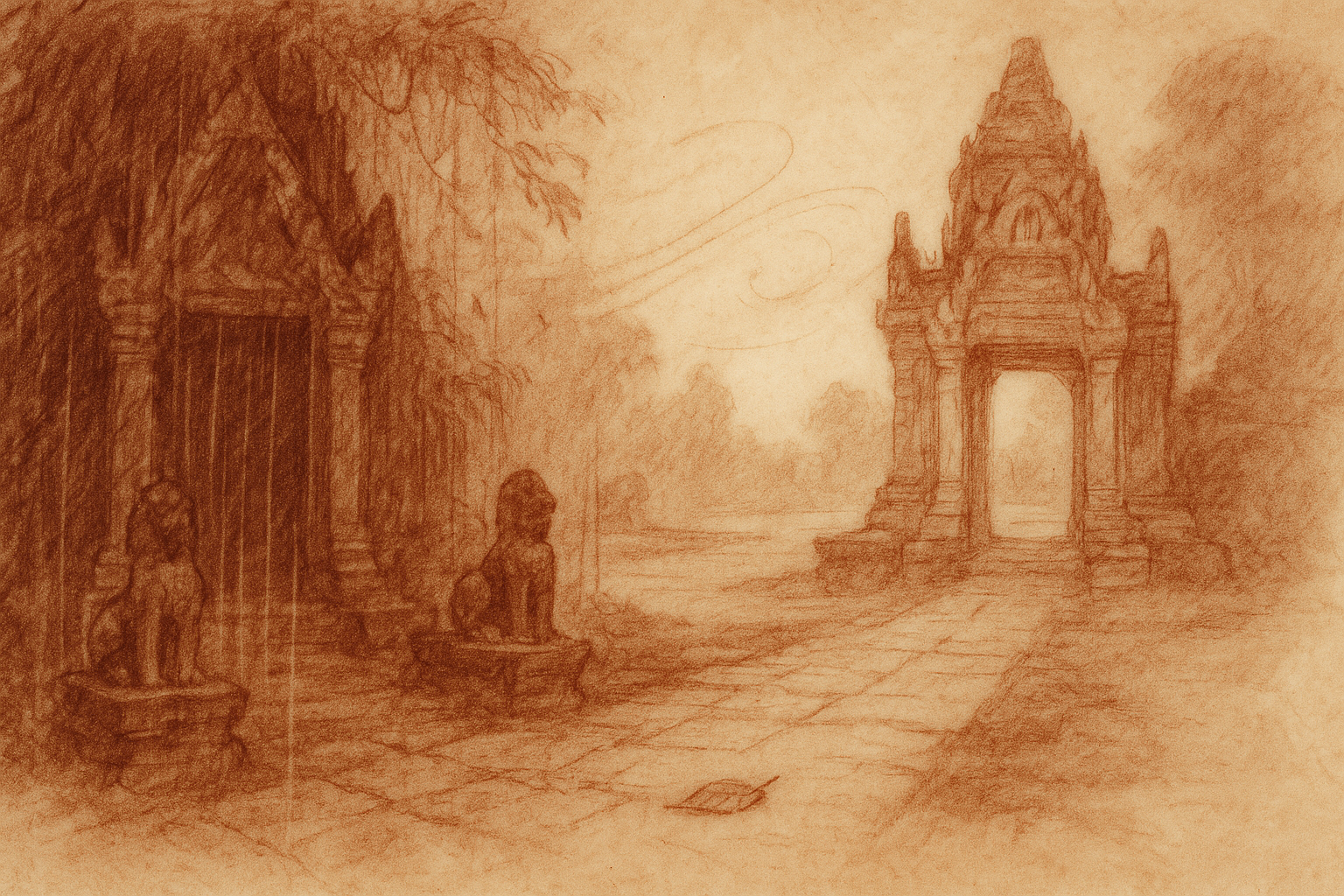
Two Winds, One Turning: The Monsoons of Cambodia
3 min read
Sanctuary of Meaning · Artist’s Journal
Lucas Varro
“The wind does not ask whether it will bring rain or silence—
it only follows the turning of the earth.”
—from a field note beneath the Bodhi tree at Banteay Kdei
—
In Cambodia, the year does not advance by calendar page or clockhand, but by the quiet breathing of the winds. The seasons unfold not through temperature or moon phase, but through the sky’s slow, devotional turning—an ancient rhythm shaped by the pulse of two great monsoons.
Technically, both are monsoons. Colloquially, only one is remembered.
The Southwest Monsoon, arriving in May and departing in October, is the voice most associate with the word monsoon. It is the season when the sky kneels and empties itself. Moist winds rise from the Indian Ocean, drawn inland by the heat-thirst of the land. Rain does not fall so much as arrive—a procession of surrender that revives the paddies, hushes the dust, and soaks the temple stones into silence.
This is the season of life returning. Lotuses unfurl. Oxen sleep beneath banana leaves. Causeways mirror the heavens. Sandstone deepens into velvet. The air tastes of earth and offering. For many, this is the monsoon they remember—not as meteorology, but as memory.
And yet, when the rains withdraw, another monsoon enters.
From November through April, the Northeast Monsoon whispers in. It is cooler, drier, and quieter. These winds descend from the Tibetan Plateau and the mountains of China, brushing the land with clarity and light. Crops are gathered. Riverbanks retreat. The sky becomes a dome of gold.
Most travellers arrive during this season—late November to February—seeking clear skies and gentle warmth. The air is crisp. The weather reliable. It is, by many measures, the most comfortable time to walk the stones.
But for me, it is the rainy season that holds the deeper call.
The rains bring stillness. The crowds thin. The temples, though unchanged, feel altered—more intimate, more veiled, more alive. While the main sanctuaries still echo with footsteps, I find solitude in the lesser-known sites, or in the early hush before sunrise, when the air itself still seems to pray.
It is not only the absence of people, but the presence of atmosphere. The light softens. The skies become vast theatres of shadow and flame. Rain slicks the stone into shades of charcoal and pewter. The moss brightens into a living green. The jungle speaks in a fuller voice.
To stand alone in such a moment—just myself, the ancient stone, and the steady breath of falling rain—is to enter something sacred. The gods feel closer. The ancestors stir. The temple listens back.
—
In common speech, monsoon means rain. But in truth, both seasons are shaped by winds—two halves of a single breath. The monsoon is not a storm. It is a turning of the earth’s attention. A shift in relationship between land, sky, and sea.
To the scientist, both are monsoons.
To the farmer, one brings promise, the other release.
To the artist, each reveals Angkor in a different light.
One wraps the temples in mist and reflection.
The other unveils them beneath the gaze of an unclouded sun.
The Khmer builders knew this rhythm intimately. The great barays and reservoirs of Angkor were not constructed to resist the monsoon—but to listen to it. To receive, to hold, to return.
And so it is: two winds, two names, one eternal turning.
The monsoon is not an interruption.
It is a remembering.
A breath the land has always known how to take.
—
Also in Library
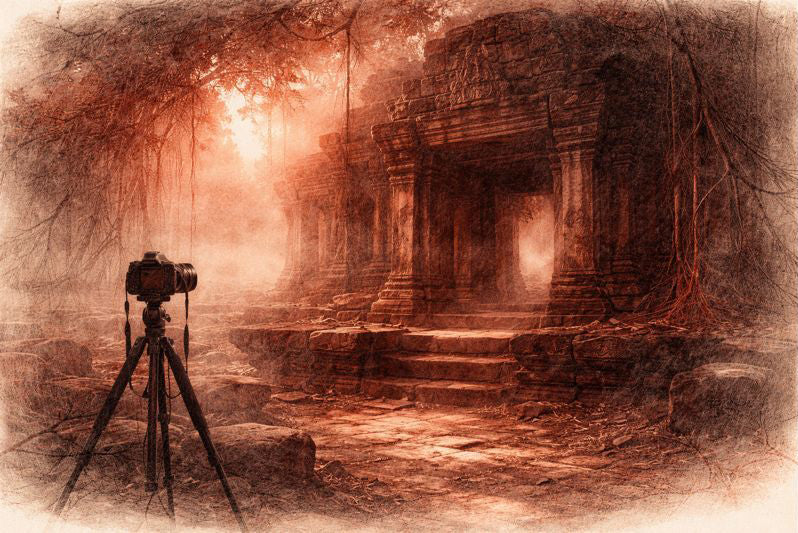
Before the Shutter Falls
3 min read
Before the shutter falls, fear sharpens and doubt measures the cost of waiting. In the quiet hours before dawn, the act of not-yet-beginning becomes a discipline of attention. This essay reflects on patience, restraint, and the quiet mercy that arrives when outcome loosens its hold.
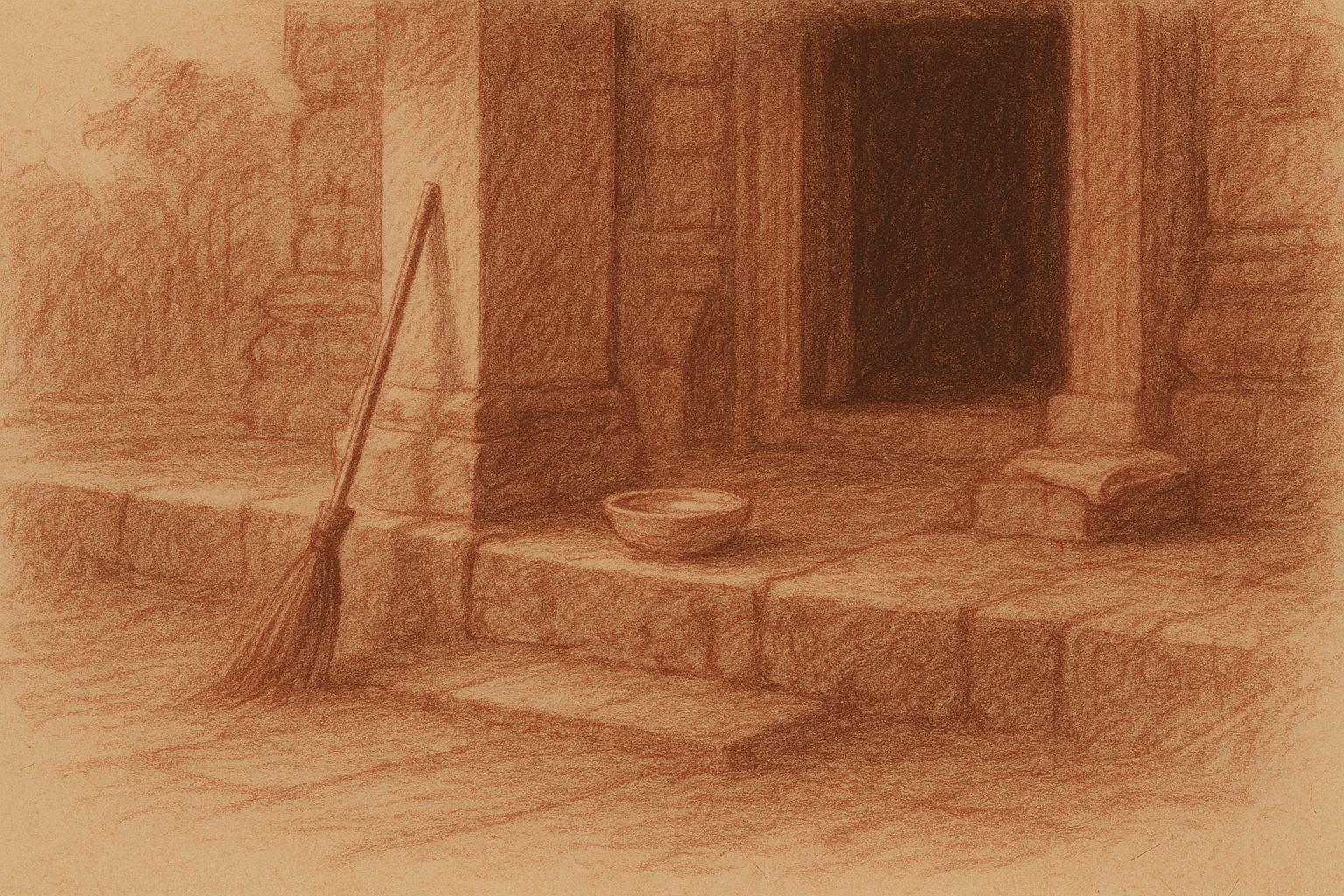
Those Who Keep the Way Open — On the Quiet Guardians of Angkor’s Thresholds
3 min read
Quiet gestures shape the way into Angkor — a swept stone, a refilled bowl, a hand steadying a guardian lion. This essay reflects on the unseen custodians whose daily care keeps the thresholds open, revealing how sacredness endures not through stone alone, but through those who tend its meaning.
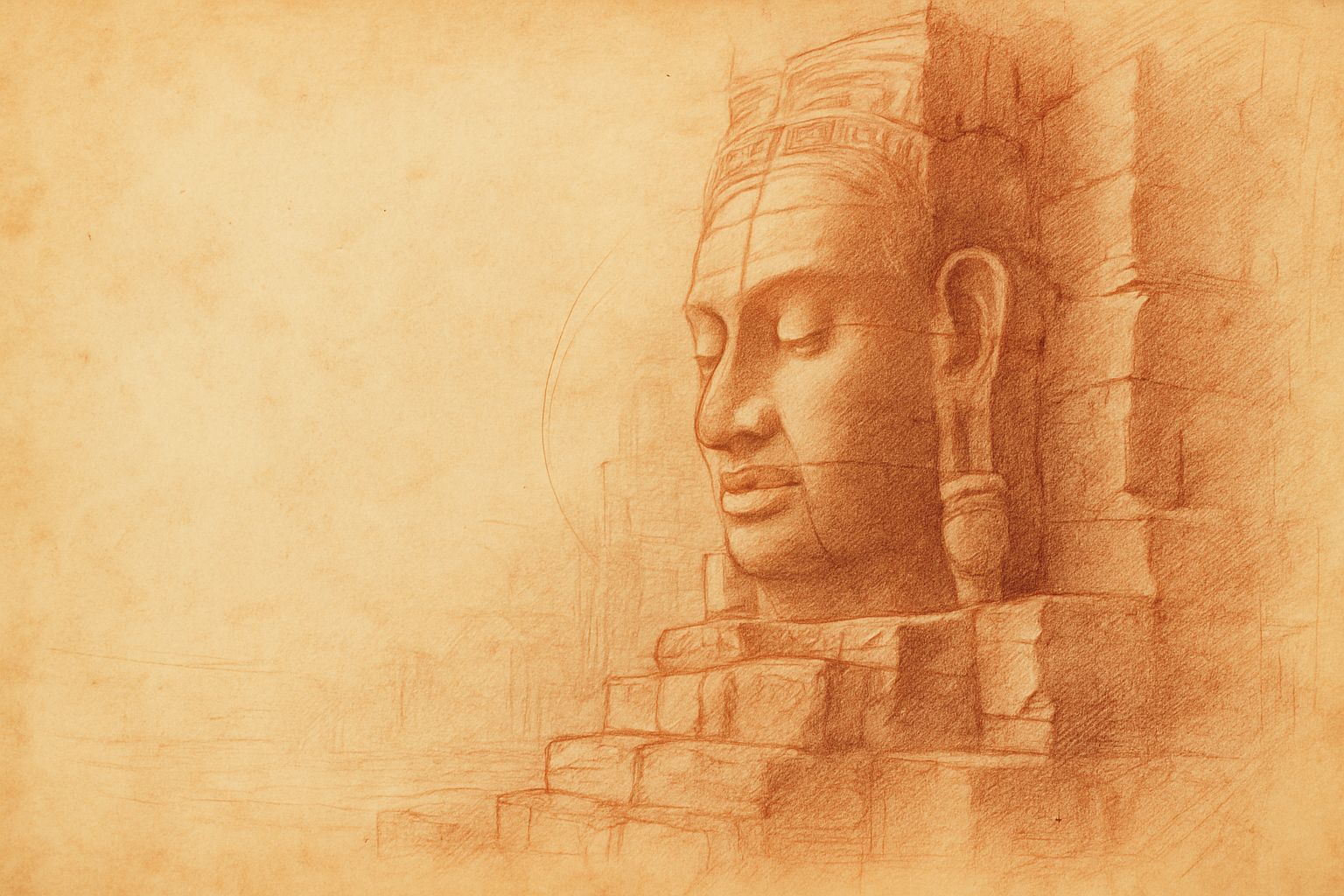
Multiplicity and Mercy — The Face Towers of Jayavarman VII
5 min read
A new vision of kingship rises at the Bayon: serene faces turned to every horizon, shaping a world where authority is expressed as care. Moving through the terraces, one enters a field of steady, compassionate presence — a landscape where stone, light, and time teach through quiet attention.
Join My Studio Journal
Receive occasional letters from my studio in Siem Reap—offering a glimpse into my creative process, early access to new fine art prints, field notes from the temples of Angkor, exhibition announcements, and reflections on beauty, impermanence, and the spirit of place.
No noise. No clutter. Just quiet inspiration, delivered gently.
Subscribe and stay connected to the unfolding story.
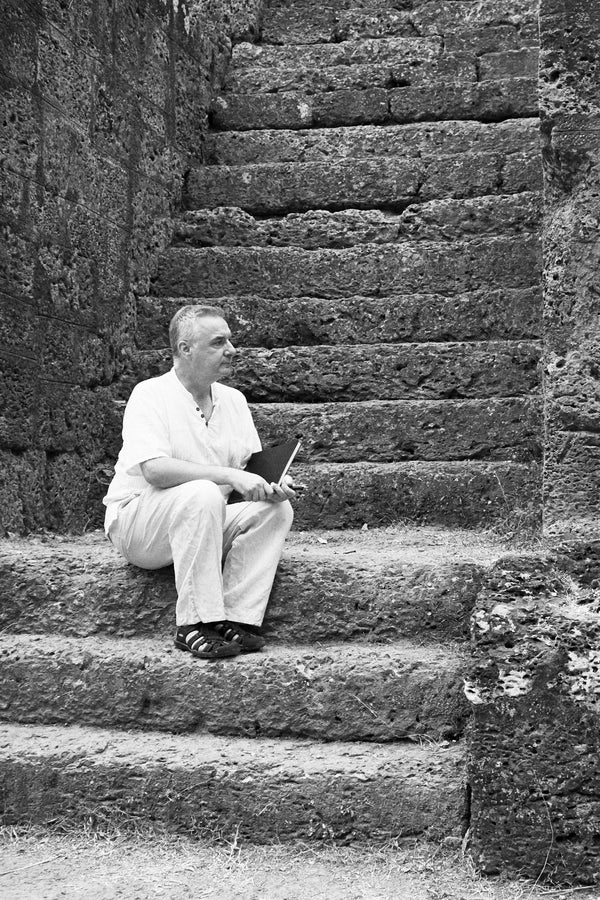
Join My Studio Journal
Receive occasional letters from my studio in Siem Reap—offering a glimpse into my creative process, early access to new fine art prints, field notes from the temples of Angkor, exhibition announcements, and reflections on beauty, impermanence, and the spirit of place.
No noise. No clutter. Just quiet inspiration, delivered gently.
Subscribe and stay connected to the unfolding story.
